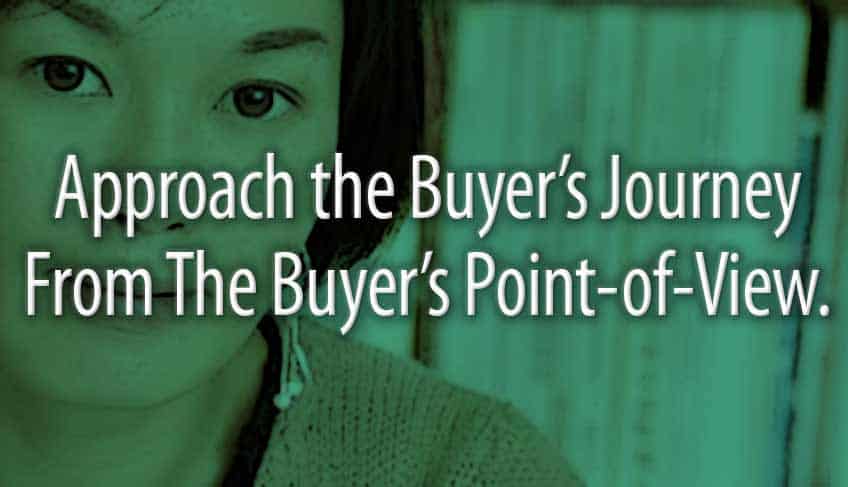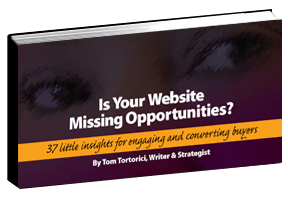
B Y T O M T O R T O R I C I
Marketers tend to look at the buyer’s journey kind of like behavioral scientists watching mice in a maze.
They may learn how to tweak their websites to marginally improve conversion metrics. But this approach tends to objectify ‘the customer,’ ignoring the more human aspects of their journey.
Perhaps marketers can gain additional useful insights by looking closer at their own real-world experiences as, well, mice with credit cards.
Professionally, I’ve learned much of what I know by assessing various web marketing approaches in terms of how I’ve recognized needs, researched solutions, made decisions, and laid my money down.
It’s always bewildered me that this isn’t the universal first lesson for students in Marketing 101. It’s certainly the first lesson of any class or presentation I’ve ever given.
This approach has taught me what kinds of headlines get me excited at the possibilities, and what kinds are so laughably ineffective that they don’t even consciously register in my mind. Despite the differences between people and circumstances, I’ve found there’s a whole lot we have in common in terms of our buying behavior.
Good messaging also means serving up the right headline at the right time.
Why? Because as an early-stage buyer who’s just starting my journey, I have a surprisingly different mindset than the one I’ll soon adopt as a better-informed late-stage buyer.
If you want to keep slicing, there are surely more than two steps in my journey, but for now, let’s keep things simple. In fact, I’m going to pretend I’ve just landed on a vendor’s Home page, and the only other page on their site is a product page.
I’m looking to buy, but I as I land on that Home page, I have three questions.
My first question is, does this company offer what I’m looking for?
Before I spend time digging further, I want to know I’m in the right place.
Simple enough, but especially when company insiders write their own web copy, they often start with assumptions that the first-time visitor is unlikely to share. So the main home page banner might focus on some product upgrade or bit of company news, without clearly telling me whether they offer what I’m looking for.
Sure, I could keep reading, to try to figure it out. But you know what? I probably won’t. Hm, let’s see what else is out there
My second question is, do they understand what I’m trying to accomplish?
In other words, do they ‘get me’? Further, do they seem to know what obstacles are standing in my way? If they do, I figure they’re more likely to help me, so I’ll open up a bit, and keep moving forward.
However, if they jump right in boasting about their commitment to excellence, company mission, reputation, or company history, my question doesn’t get answered. They’re clearly intent on serving themselves, not me.
My third question is, will their solutions work for me?
The best way to capture my imagination is to paint me a picture. Help me imagine that I’ve bought the product, my problem is solved, and having made the right choice has made me a hero.
The thing to remember is that as an early-stage buyer, I’m in a relatively emotional state, frustrated with the problem in my lap, and looking ahead to a happy-ending outcome. So emotionally-tinged messages are going to work for me here.
I’m not thinking about the details yet, so in most cases feeding them to me on the home page is just going to be a buzz kill, and a disconnect.
By the time I click through to the company’s product page, I’m likely further along in my buyer’s journey, and I have a different set of questions.
My first question is, how does this product compare with similar ones I’ve been looking at?
Here’s where the details come in, since I’ve probably been checking out other vendors, and I’m now focused on comparing specific features and benefits. Basically, I’m looking for a reason to choose one provider over another. Logical, rather than emotional, appeals are going to sing to me here.
Unfortunately, too often the company is still trying to convince me why I need this type of product in the first place. Well, no, I’m already past that decision, so stop wasting my time. If I don’t see a clear competitive benefit by this point, I’ll assume there is none.
My second question is, what will it be like doing business with you, and what’s the process?
I wasn’t thinking about these things when I started my journey, but I am now. That’s why it’s important to remember the difference between product benefits, which accrue after the person has started using their item, and process benefits, like one-step ordering, free shipping, and site features that help me choose the right size/color/model.
Sometimes companies like to tout their process benefits on their Home page, but in some cases that’s not the place for them – the customer is looking further ahead at this point, to the shiny solution. Business insiders also tend to gravitate toward the buying process because that’s the part they themselves are involved in.
My third question is, how can I get the product?
Yes, I saw the call-to-action on the Home page, but I wasn’t ready to buy back then. Now I am. So don’t forget to repeat that call-to-action on the product page, so that invitation is staring at me as I make my final decision.
Telling me what’s going to happen next, after I click, also makes me more confident about responding, because I know what to expect.
Bottom line: when you’re working on a website for a seller, keep stepping back and looking at it through the buyer’s eyes.
Paying attention to the buyer journeys you make – both the logical and emotional aspects – will make you a smarter, more helpful marketer.
Continue investigating this buyer-focused approach with An Atlanta Copywriter Shares 3 Surprising Secrets.
Share It:
 About the Author: Tom Tortorici is an Atlanta copywriter and web content writer who helps companies make a genuine connection with their audience. His classes and conference presentations have focused on how writing, strategy and design can work together to grab attention and interest even among readers with short attention spans. In addition to working directly with businesses, Tom regularly partners with web designers and marketing agencies.
About the Author: Tom Tortorici is an Atlanta copywriter and web content writer who helps companies make a genuine connection with their audience. His classes and conference presentations have focused on how writing, strategy and design can work together to grab attention and interest even among readers with short attention spans. In addition to working directly with businesses, Tom regularly partners with web designers and marketing agencies.
All Posts/Subscribe >
Info for Businesses >
Info for Designers/Agencies >
Tom Tortorici Inc. | Tom@TomTortorici.com | 770-934-7861 | 3101 Rockaway Rd | Atlanta GA 30341

